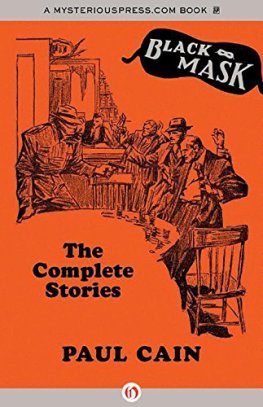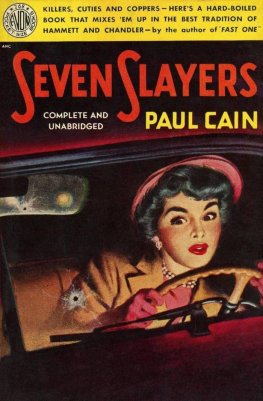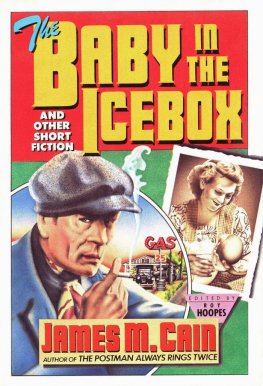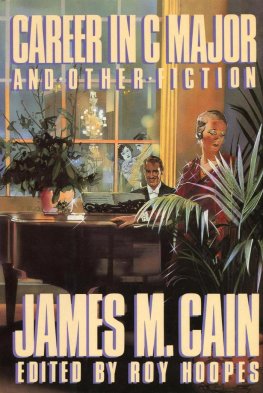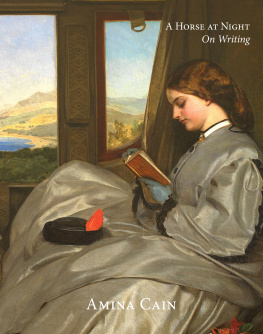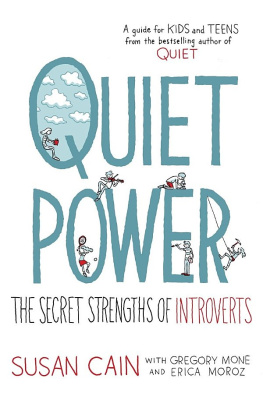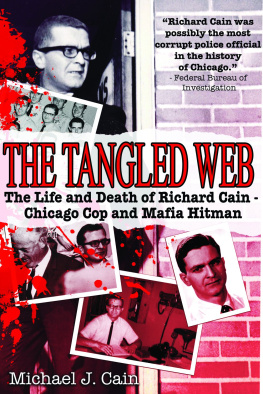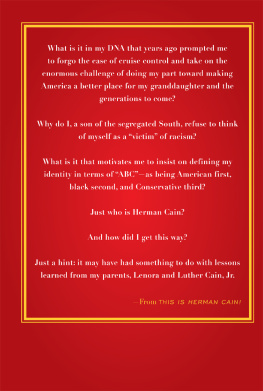The Paul Cain Omnibus:
Every crime story and the novel Fast One as originally published
(Black Mask)
Paul Cain by Boris Dralyuk
Coleman said: Eight ball in the corner.
There was soft click of ball against ball and then sharper click as the black ball dropped into the pocket Coleman had called.
Paul Cain, Murder Done in Blue
Somebody always takes it about as far as itll go, and no one took the hard-boiled farther than Paul Cain.
Raymond Chandler tagged Cains only novel, Fast One (1933), as some kind of high point in the ultra hard-boiled manner. They use that as a blurb; to my mind, those qualifications some kind, ultra reek of anxiety. Stacked pound-for-pound against Cains lean and war-hardened antihero Gerry Kells, Chandlers Philip Marlowe comes off like a flabby, eccentric chatterbox more Sydney Greenstreet than Humphrey Bogart.
The novels title says it all: Fast One. Some have called it A Fast One or The Fast One, but thats not it. Theres neither need nor time for articles. Someone or something, in the singular, is fast. Fast and singular. And the chase is on:
Kells walked north on Spring. At Fifth he turned west, walked two blocks, turned into a small cigar store. He nodded to the squat bald man behind the counter and went on through the ground-glass-paneled door into a large and bare back room.
Theres so much momentum in those first lines so little besides movement that the reader can hardly keep up, much less take a pause. A pause might raise some questions. Just how does Kells get through that ground-glass-paneled door? Does he open it? Bust right through it? Roll through it as if it didnt exist? But, of course, the door doesnt exist. Cains language is stripped so bare its hardly referential. Thats the central paradox of the hard-boiled style: For all its reputed hardness, the universe it conjures is eerily immaterial verbal, not substantive. Hard-boiled protagonists throw punches indefatigably, get blackjacked unconscious at the end of one chapter only to emerge with a slight headache at the start of the next, and keep moving to the last.
Cains characters arent people, theyre billiard balls, propelled by an initial push and colliding till theyre all sunk One, Two, Three, as the title of one of his stories has it. Fast Ones first chapter, which starts with Kells rolling down Spring in downtown L.A., set to spark a gang war, ends with a kind of carom shot involving a gambler named Jake Rose and a pint-sized triggerman:
Rose came around the desk and took the automatic out of Kells belt, held it by the barrel and swung it swiftly back and then forward at Kells head. Kells moved his hand enough to take most of the butt of the automatic on his knuckles, and bent his knees and grabbed Roses arm. Then he fell backwards, pulled Rose down with him.
The little man came into the room quickly and kicked the side of Kells head very hard. Kells relaxed his grip on Rose and Rose stood up, brushed himself off and went over and kicked Kells very carefully, drawing his foot back and aiming, and then kicking very accurately and hard.
The kitten jumped off the desk and went to Kells bloody head and sniffed delicately. Kells could feel the kittens warm breath. Then everything got dark and he couldnt feel anything any more.
That kitten is a nice touch. Sniffing, delicately, at a not-quite-dead piece of meat. Just another animal, drawn to a meal.
Its hard to believe that the first installment of Fast One, which debuted in the March 1932 issue of Black Mask, is Cains first appearance in print. He hit the ground running. The novel sets the pace for Cains other stories, while Kells sets the mold for their protagonists: obdurate plug-uglies or clever machers, such as the titular narrator of Black (May 1932); or Red, who narrates Parlor Trick (July 1932) and Trouble-Chaser (April 1934); or St. Nick Green of Pineapple (March 1936). Black, Red, Green beautifully rendered abstractions careening across the flat surface of Cains prose.
Cain got his break thanks to Captain Joseph T. Shaw. In 1926, Shaw took the helm of what was then called The Black Mask magazine, a matrix for the hard-boiled style. (One of Shaws first acts as editor was dropping the The from the magazines title.) Twelve of the fifteen hard-boiled stories reprinted in this volume first appeared in Black Mask, along with the five stories that were eventually sutured together as Fast One. Shaws previous star contributor, Dashiell Hammett, left the magazine in 1931, the year Cain arrived. Shaw himself was forced out by the publisher in 1936, the year Cains last story appeared in the magazine. Cain wasnt just Hammetts successor, to Shaws mind: in the matter of grim hardness, he wrote, Cain was Hammetts superior. Dash paused on the threshold, [Cain] went all the way.
Whatever Shaw meant by grim hardness, it isnt to everyones taste. An earlier edition of Cains stories from Centipede Press carried brief, perceptive introductions by leading names in crime writing, including Ed Gorman, Joe Gores, Edward D. Hoch, John Lutz, and Bill Pronzini. Most of the commentators were duly reverential, but some couldnt hide their qualms. While Robert Randisi noted that Cains work is [b]etter than most of the Black Mask set, he still ranked it a notch or two below that of Chandler and Hammett. As Gorman put it, [t]here is in Hammett a great sorrow and in Chandler great melancholy. Not a trace of either appears in Cain.
What Gorman mourns is the absence of an emotional load. But that lack is only the symptom of a profounder vacancy. Hammett was an inveterate lefty, and used the Continental Op to lance capitalisms Poisonvilles, while Chandler, who admits to having learned American just like a foreign language, forever remained an outraged public school boy, pinning his hopes for civilization on a medieval knight in a powder-blue suit. One red and the other reactionary, both Hammett and Chandler harbored strong convictions convictions expressed, whether intentionally or not, through their chosen genre. Not so with Cain, who seems to have been free of any such burden. The main thing his work expresses is the genre itself, in all its inexorable but essentially meaningless logic. Hes the oracle at Black Mask, huffing the fumes of Capt. Shaws cigars and delivering an almost unmediated vision of the hard-boiled as such.
In Back in the Old Black Mask (1987), the writer and historian William Brandon, who cut his teeth at Shaws rough paper, recalled his early mentors thoughts on objective writing:
Objectivity was part of what Shaw meant by style a clean page, a clean line, an uncluttered phrase. I remember him showing me a couple of lines in a manuscript of Raymond Chandlers, something such as, I looked into the fire and smoked a cigarette. Then I went to bed. This was the key line of the story, Shaw said. In those few minutes watching the fire the protagonist thought the problem through and reached his tough decision. You werent told that but you knew it. The line was clean, the effect was subtle but strong. Objective writing was good hard prose as against the spongy prose of subjectivity.
One senses that Shaws proclamation isnt simply an older writers attempt to provoke or mystify a starry-eyed tyro. The line may or may not be pivotal for Chandlers story, but it certainly provides a key to Shaws notion of storytelling. Rudimentary and drained of character, these two sentences report nothing but action thats only implicitly, if at all, related to the plot. Brandon recalls another of Shaws edicts, more telling than the first:
A letter from Hammett, Shaw said one day, had included the line, I can make a better wall with the same bricks now than I could make a year ago. Shaw was much taken by the image of the wall and referred to it again and again. Its the wall itself that counts for the writer, he said, not what it closes in or out thats for the critics to mull over. The writers business is just making the best wall he can.

